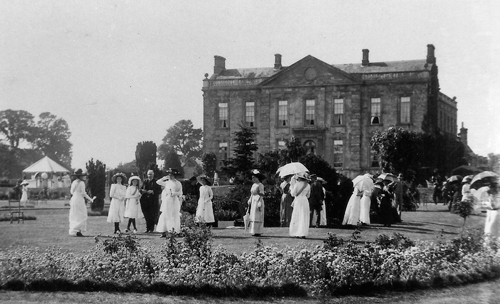Joy Timms gave this talk on early Bruern Abbey on March 13th 1990. [ Society programme here ] Her talk concentrates on the early period up to the dissolution of the monastries. The talk illustrates the flow of monastic life at Bruern Abbey and its effect on the local inhabitants.
We learn that the 1086 Doomsday Survey the location is called Treton, or ‘Draitone’ and the Cistercian abbey of Bruern was founded by Nicholas Basset in 1147. This was part of a development of Cistercian holdings in England which started during the reigns of Stephen and Henry 1.
The first grant of Nicholas Basset consisted of a tract of open pasture (brueria) on which the abbey was erected. At some time after the confirmation charter of Henry II, and probably about 1173, the founder gave the whole of his manors of Treton and Nethercote, together with the church of Treton.
Joy gives a summary of the dynamics of life in the Cistercian Order. She shows how Bruern starts to fit squarely into a story of influence and power – and many conflicts and misdemeanours too – from the simple beginnings at the arrival of 12 donkey-riding monks in that mid 12th century moment.
Low points came in 1363 when the abbot John de Dunster, was finally acquitted of various misdemeanours and mismanagement. Three years later John de Dunster himself made a petition for an indulgence for those who contribute to the repair of the monastery, as it could only support six persons instead of sixty monks and sixty lay brothers. Matters were finally settled – though not without some difficulties – in 1366 with the apointment of William Harvey and John Gaulifrey to get the abbey back on its feet again.
Joy describes better days which came in 1382, when Bruern was given licence to acquire the manor of Fifield and other lands. She describes later gifts and legacies, and later, the develpment of activities around the 15th century wool trade and attendant changes in agricultural focus.
The changes in fortune are again reflected in 1529 and 1530 when we hear of riots at Bruern, and attempts to unseat John Chaffcombe, the abbot, and indeed Joy’s talk is throughout, a description of colourful times, ending with the dissolution in 1536.
 |
About Joy Timms
Joy Timms is the daughter of Mr and Mrs Robert Griffin who farmed at Bruern Grange. She is married to Raymond Timms and lives on a farm in Salford near Chipping Norton and has good knowledge of Bruern Abbey. Her late father Robert and late uncle Melvyn (sheep farming expert) also owned many steam engines, ploughs and rollers.
Joy Timms’ father was the 3rd generation of her family to live at Bruern Grange, and Joy explains her fascination for Bruern stems from her exciting childhood experiences there, including the discovery in the 1950s of secret underground passages in the Grange cellars.
DB 2021

